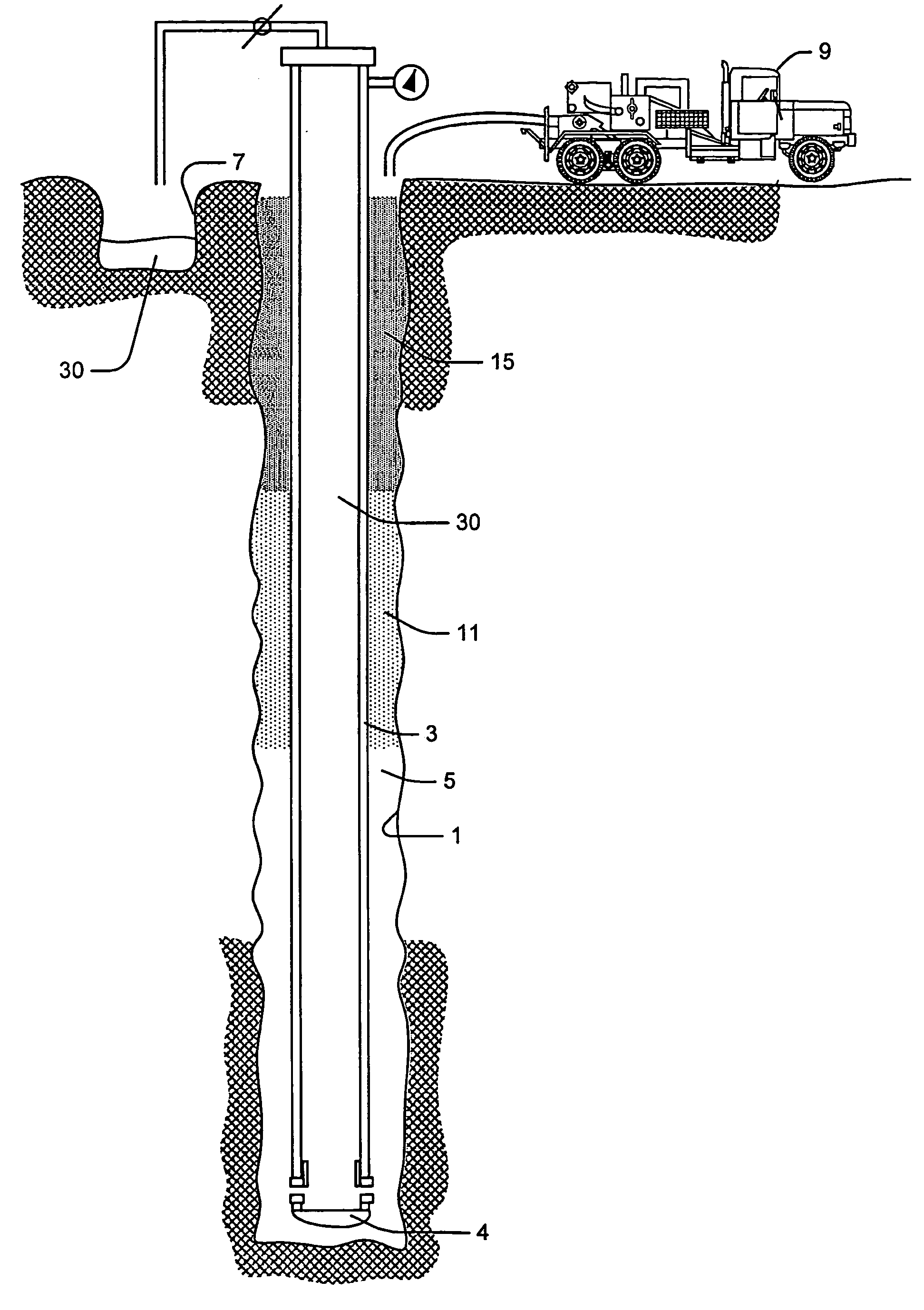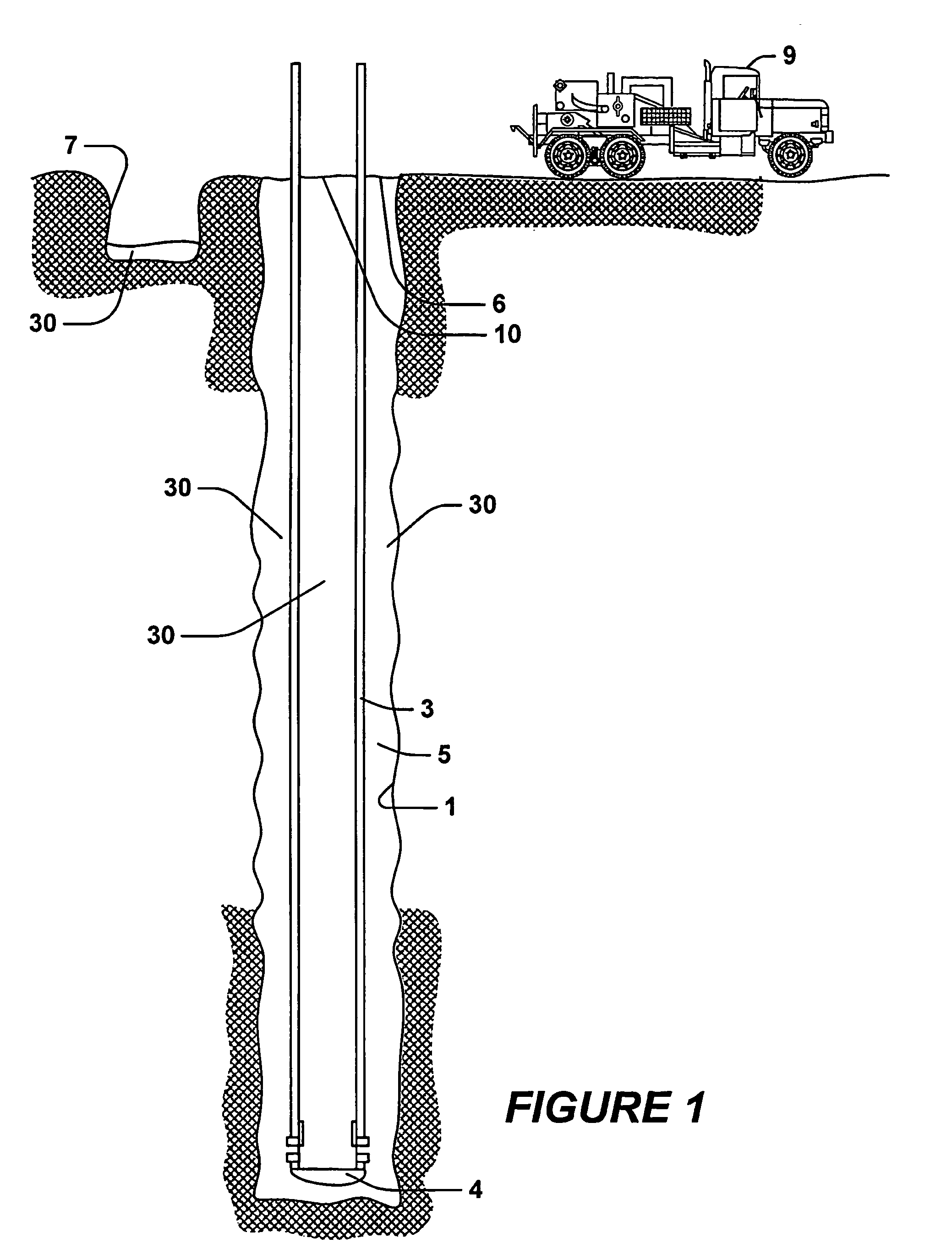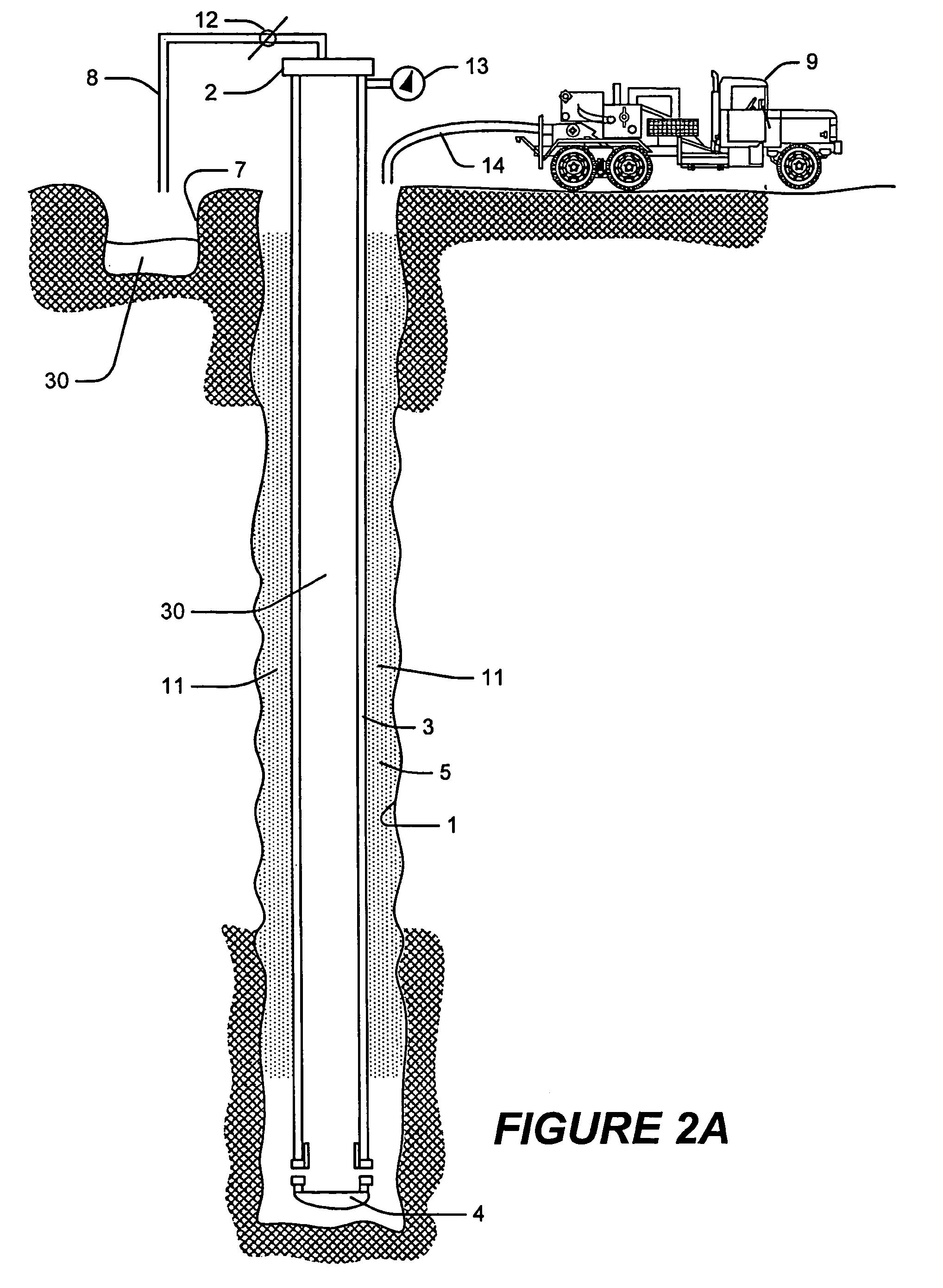Methods and systems for reverse-circulation cementing in subterranean formations
a technology of reverse circulation cementing and subterranean formations, applied in the direction of survey, sealing/packing, borehole/well accessories, etc., to achieve the effect of facilitating the determination of the cement composition volum
- Summary
- Abstract
- Description
- Claims
- Application Information
AI Technical Summary
Benefits of technology
Problems solved by technology
Method used
Image
Examples
example
[0029] For example, assume that casing 3 has a length of 2,000 feet, and an internal diameter of 5 inches. Assume further that the desired length of casing 3 to be cemented is 2,000 feet. Accordingly, the radius of casing 3 will be 2.5 inches. Thus, Vtot=H πr2=[(2000 feet)(3.1416)((2.5 inch)2 / 144)] / (5.614583)=48.6 barrels. Further assume that the desired cement composition 15 has a density of 80 lbs / ft3, that circulation fluid 30 has a density of 65 lbs / ft3, and that the desired equilibrium fluid 11 has a density of 100 lbs / ft3. Accordingly, applying EQUATION 2, Vef=Vtot(ρcc15−ρcf30) / (ρef11−ρcf30)=48.6 barrels (80 lbs / ft3−65 lbs / ft3) / (100 lbs / ft3−65 lbs / ft3)=20.8 barrels. Thus, in this example, 20.8 barrels of equilibrium fluid 11 would be required for use in order to ensure that the pressure displayed by pressure indicator 13 read zero when the leading edge of cement composition 15 reached casing shoe 4.
[0030] Where a relatively heavy equilibrium fluid 11 is used, it may be inject...
PUM
 Login to View More
Login to View More Abstract
Description
Claims
Application Information
 Login to View More
Login to View More - R&D
- Intellectual Property
- Life Sciences
- Materials
- Tech Scout
- Unparalleled Data Quality
- Higher Quality Content
- 60% Fewer Hallucinations
Browse by: Latest US Patents, China's latest patents, Technical Efficacy Thesaurus, Application Domain, Technology Topic, Popular Technical Reports.
© 2025 PatSnap. All rights reserved.Legal|Privacy policy|Modern Slavery Act Transparency Statement|Sitemap|About US| Contact US: help@patsnap.com



